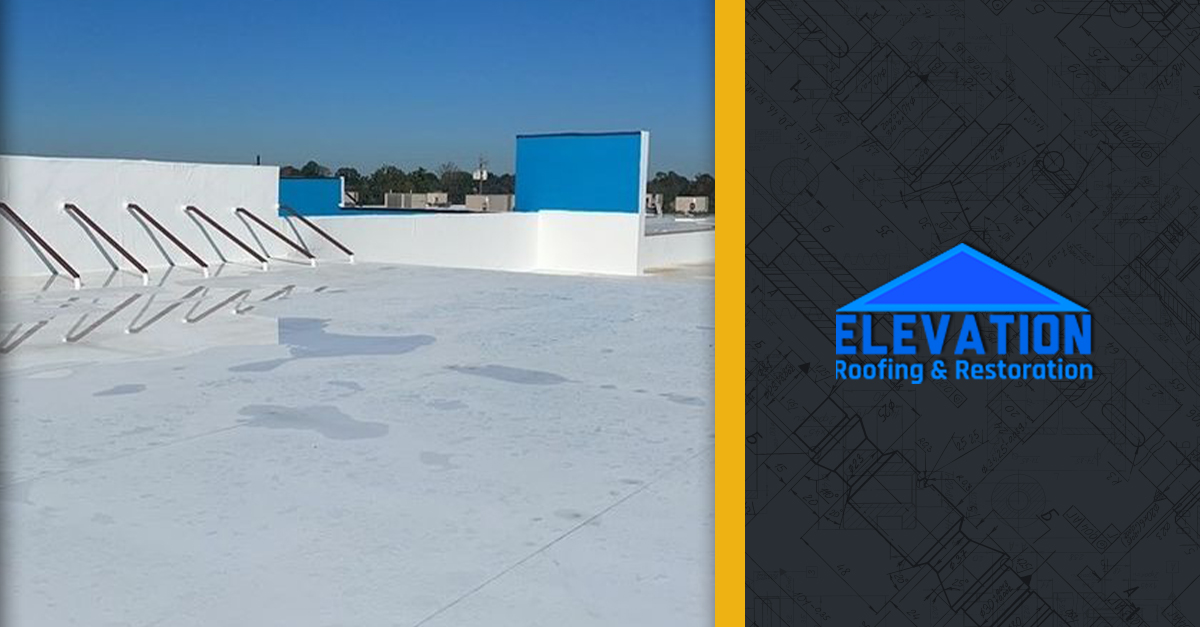
Flat Roof Failures: What Visual Inspections Might Miss
Property managers play a critical role in keeping buildings running smoothly, and that includes the roof. Routine walkthroughs and surface checks are a smart first step toward preventing costly repairs. But when it comes to flat roofs, even a trained eye can miss what’s happening below the surface.
Flat roofing systems are deceptively simple. On the surface, they might look fine: no visible leaks, no standing water, no debris. But underneath, small problems can quietly escalate into major failures.
That’s not a knock on visual inspections. It’s a reminder that even the most diligent property teams benefit from partnering with roofing specialists who bring more tools, deeper insights, and a different perspective.
What’s Visible—and Valuable—in a Routine Inspection
On flat roofing systems, surface-level issues can be easy to identify if you know what to look for:
- Ponding water that doesn’t drain within 48 hours after rainfall
- Obvious membrane damage like cracks, blisters, or punctures
- Loose flashing around HVAC units, skylights, or other penetrations
- Clogged drains that can accelerate deterioration
- Debris that traps moisture or damages the surface
Catching these early prevents small issues from becoming major ones. But surface inspections don’t go too deep, and that’s where the real risk often lies.
The Trouble You Can’t See Until It’s Too Late
Even the most attentive walkthrough can’t reveal what’s happening beneath the surface. Flat roofs are multilayered systems, and many failures develop where they’re hardest to detect—out of view, below the membrane, or masked by weathered materials.
Here are some of the most common issues that go unnoticed during a visual inspection:
- Trapped moisture or saturated insulation that hasn’t reached the interior ceiling—yet
- Worn or separating seams that appear intact until heavy rain exposes them
- UV degradation that weakens the membrane over time, especially in sun-exposed areas
- Hail damage that doesn’t puncture the membrane but causes hidden fractures
- Slow-developing drainage problems that only show up under heavy load conditions
- Subtle sagging or structural movement that impacts long-term performance
Left unchecked, these can shorten roof lifespan, void warranties, or lead to emergency repairs that could’ve been prevented.
The Value of a Professional Assessment
Professional assessments dig into the structural health of the system in ways that standard walkthroughs can’t. This helps property managers make smarter decisions, avoid emergencies, and plan capital expenses with confidence.
Here’s what a professional inspection brings to the table:
- Thermal imaging and moisture detection to identify trapped water or insulation damage
- Core sampling to assess membrane thickness, aging, and underlying saturation
- Drainage and slope analysis to catch slow-developing ponding or structural deflection
- Detailed documentation that supports budgeting, warranty compliance, and insurance claims
- Repair vs. replacement insights based on condition, not just appearance
The goal isn’t to replace your maintenance routine, but to strengthen it. By combining surface-level awareness with professional diagnostics, you get a full picture of your building and fewer surprises down the road.
A Roofing Partner Who Helps You See the Whole Picture
For property managers juggling tenants, vendors, and capital planning, a roofing partner can take the guesswork out of what’s happening overhead.
Elevation Roofing & Restoration offers flat roof assessments designed to complement—not replace—your maintenance routines. We bring the tools, training, and reporting to detect hidden issues and help you avoid reactive costs.
Whether you manage one building or a full portfolio, our goal is the same: to help you protect your assets and plan with confidence. Schedule an assessment and get a clearer view of what your roof might be hiding.